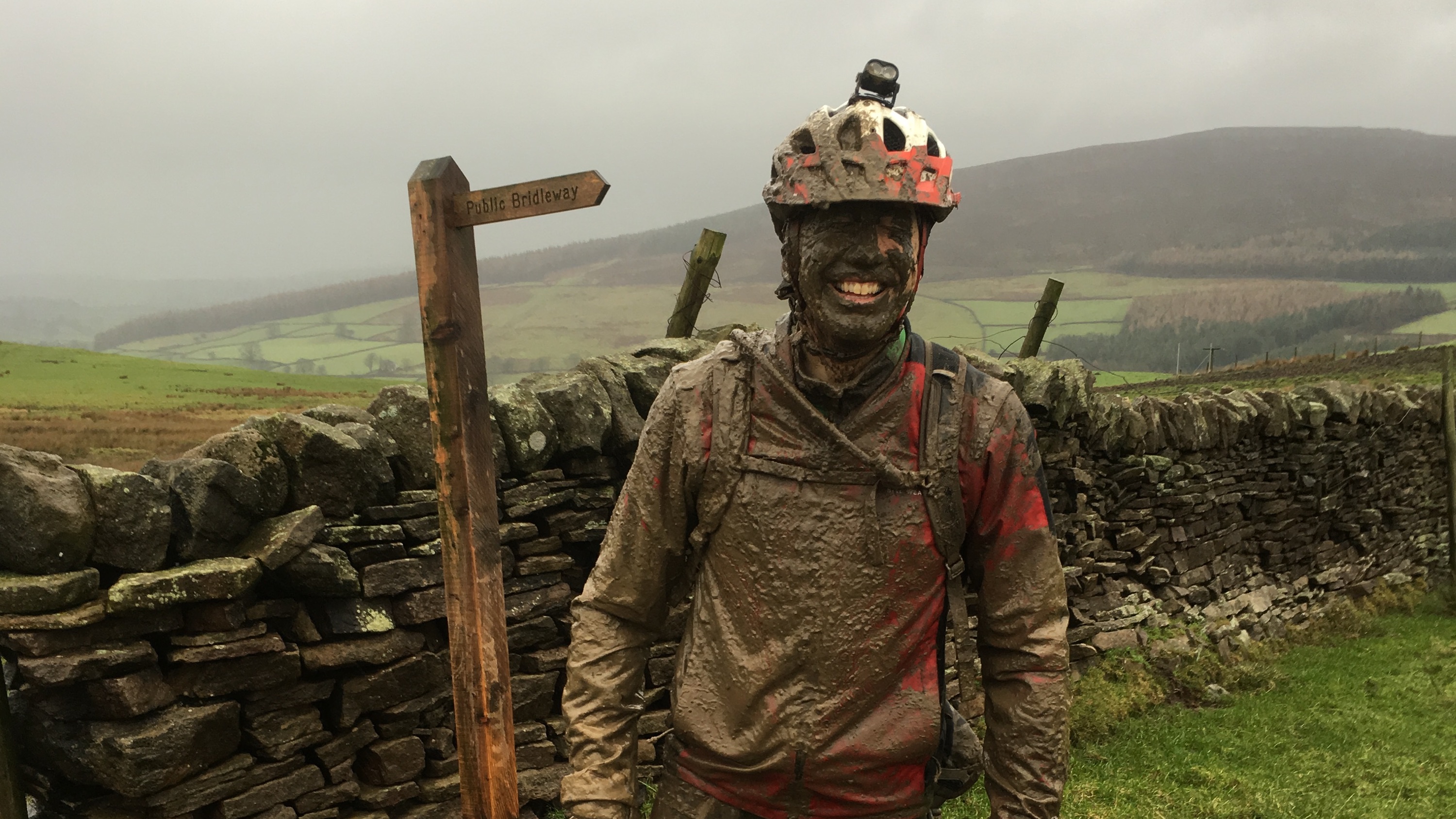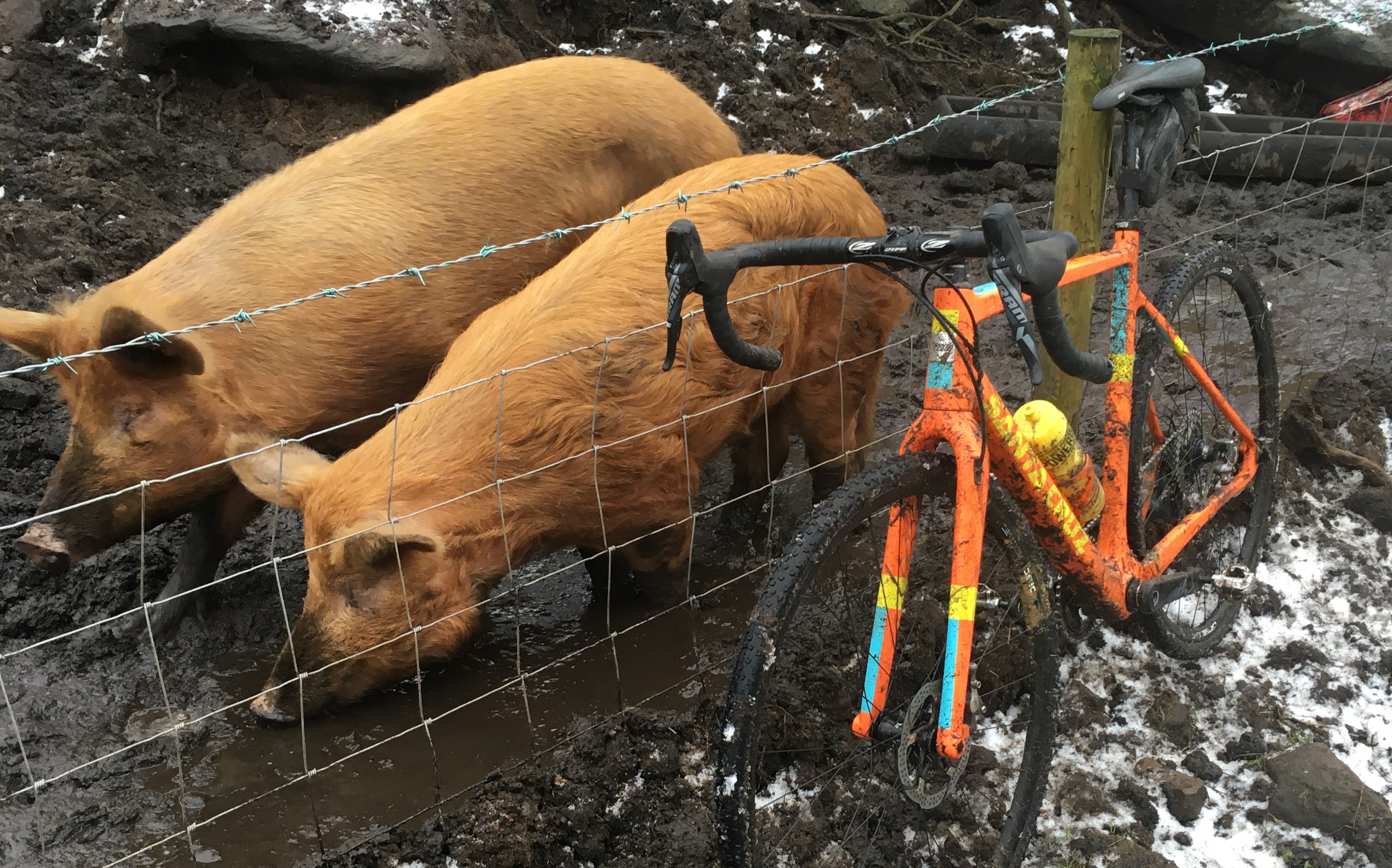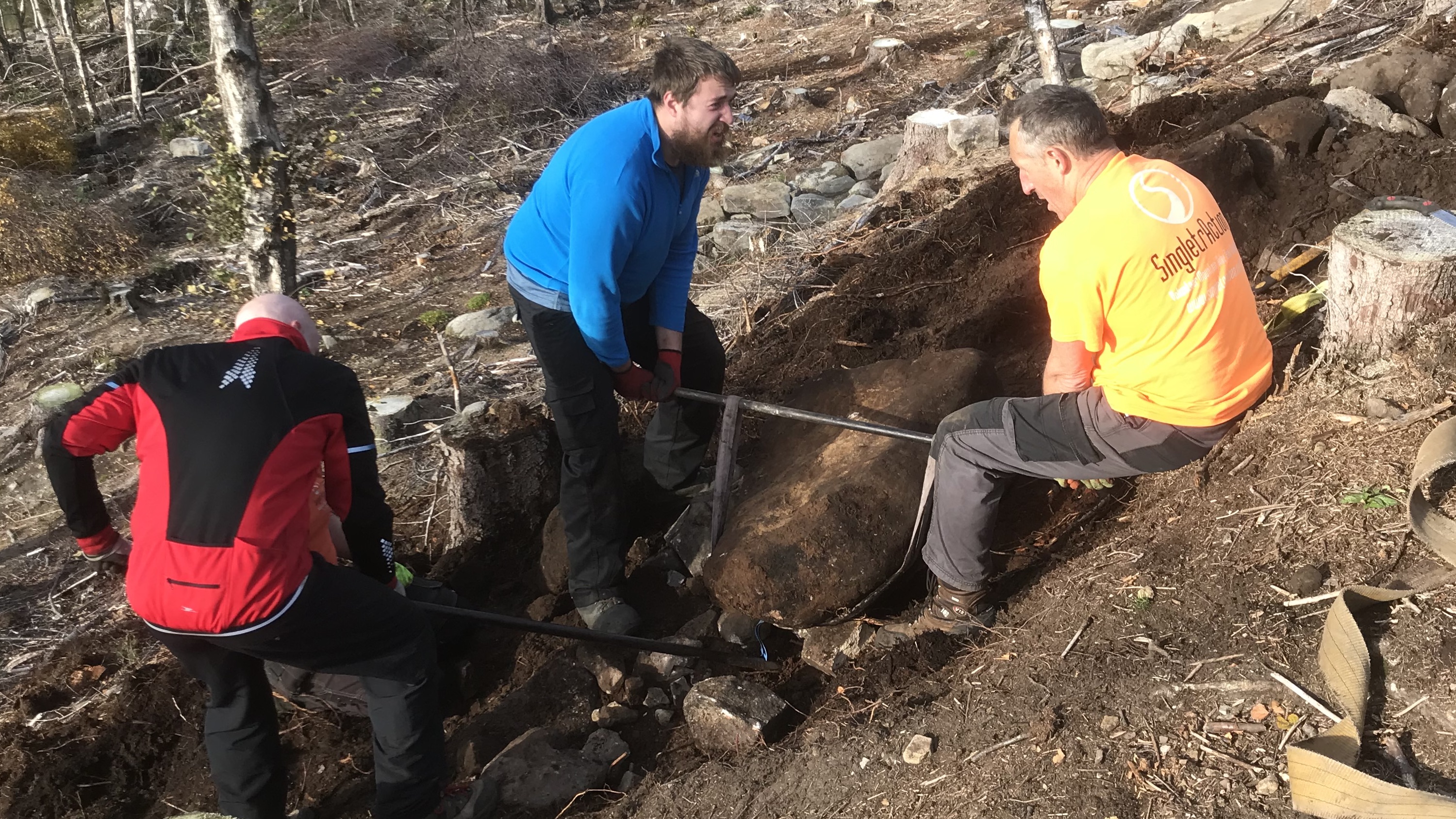Bespoken Word – get better at wetter, part 2
Guy Kesteven reckons riding in the wet doesn’t have to ruin your mood, your bike, and the trails. In part 2, the old wrinkler throws some wisdom at how and where to ride to enjoy winter, or just wetter, trails, and how not to be a d*ck when it’s weather for ducks

Last week I started talking about what you can do to enjoy wet riding more in terms of mental and physical prep. Now it’s time to look at where, when and how you ride, and ways to change or slightly adjust that for happier times however hard it’s been hammering down recently.
Where to go when it’s wet
Working out where to ride when it’s wet is all about absorbency assessment. Or to put it more bluntly, how sticky do various places get once you start adding water.
Now I’m an archaeologist by trade, not a geologist, but the soil's aspect is pretty simple. Rock and gravel might get slightly more slippery (OK a lot more slippery if we’re talking about chalk or limestone), but they certainly won’t get sticky. Your tires won’t obviously cut gouges through them either and they won’t immediately coat your bike in a layer of component-eroding sludge.
That makes heading for areas of harder surfaces the obvious smart move when it’s been really wet weather.
While it can be a fight to ride through and adds a bit of a grinding paste while you’re doing it, sand also drains a lot quicker than soils with more organic content. It rinses off bikes and kit easier afterward and, because it’s basically just crushed rock and gravel, you’ll often find sand hanging out with its hard-wearing brothers too.
The ground to avoid as much as possible when it’s wet are softer soils and particularly clays. That’s because they soon turn into a gluey mess that doesn’t just slow you down, but makes tire tracks into really obvious ruts. These then become paths of least resistance channels for any water runoff and fast-track erosion. Even with the best MTB tires for mud, really clay-rich soils can completely clog a bike solid in a few meters too and that’s when things like sudden chain snaps or destroyed rear mechs happen. Not ideal if you’ve got a drag a solid-wheeled sled back to where you started in the pouring rain and cold.

Weather or not?
How you react to the weather in terms of timing can also change the results of your ride quite dramatically. We’ve all seen how changing weather can affect the results of downhill races as tracks become stickier and slower as they dry out or faster as they get wetter and cleaner. The same applies to normal riding too.
So while it always seem like the smart move to wait until the rain stops before riding, you might actually have better trail conditions while the ground and your bike are still being rinsed off. Not once everything has started to sink in and get soggy and sticky. You’ll almost certainly have quieter trails to play on too, and either way, you’ll probably be filthy once you’ve finished riding.
The same applies to riding in the woods or in the open. It’s always tempting to go undercover when the weather is bad and it can certainly give you shelter from driving rain and windchill in severe conditions. At the start of the wet season these places can stay dry for a bit longer than exposed areas too. Woods are full of leaves and undergrowth that mulch down into sticky mud though or just hang around wet and dripping for hours after it’s stopped raining. That means you’re likely to be going slower and getting filthier undercover than you are in the open.
Meter Illogical
Aiming for the wettest parts of the trail when riding might seem illogical, but again it makes the most sense. For a start, riding through puddles or up/down the ‘stream strip’ in the center of a trail stops erosion spreading outwards and creating more of a mess. You’re also riding over the part of the trail that’s been cleaned up by moving water and had the soggy, sticky stuff removed. Wet rubber rolls faster as the water basically acts as a lubricant, but hard surface traction is still more consistent than slippery slop. That’s why you’ll always go faster if you literally go with the flow.
It’s also why relaxing and riding the rut is always the best idea on swerving nu skool trails, but then ideally you shouldn’t be riding rut trails at all. That’s because anything that looks like someone has carved a river down a hillside will behave exactly that as soon as the water comes in at the top. The straighter and steeper the line, the faster and more damaging the erosion will be too. Instead, stick to trails that contour and naturally (or through deliberate design) shed water off the side in sheets, not in focused streams.

Don't get stuck, get stuck in
If you find your local trails are getting damaged by weather or riders, then winter is the ideal time to repair them too. That’s because there’s less undergrowth in the way and it’s obvious to see where there are any puddling or water runoff problems. At a time when it’s sometimes hard to find the enthusiasm to ride, getting a group of mates together to add some rocks to a swampy bit, reshape a corner to drain better, or get rid of some of those fallen trees that are still there from a previous storm can be a welcome change. It’s also a great time to get involved with local trail-building groups and see what they’re planning and how you can help.
What you shouldn’t do is thoughtlessly ride the sh*t out of one badly planned, erosion-creating trail for a couple of weeks until it’s ruined and then go and build an identical one next to it to repeat the process again. That’s how areas that have been ridden quietly and respectfully for years end up being seen as an infestation site of potential ground damage, other user conflict, liability issues, and getting shut down completely.
E-Rosion
Oh and while I’ve got my ‘don’t be a d*ck’ hat on, if you’re lucky enough to have a motor helping you get up stuff, don’t abuse that power. If you torquing up a soft singletrack is clearly tearing it to shreds way faster than a normal rider, get off and push or find a less damaging way up. Whatever you’re riding, being smoother on the power and brakes will not only mean less slip and slide but more control, it also means softened trails will last a lot longer. So always think about staying light and loose on the bike ‘Danny Hart @ Champery’ style and if you can’t ride a trail properly without straight lining corners or skidding, practice somewhere less sensitive until you can.
That way we’ll only have a bit of weather to worry about, and as I said right at the start of last week, if you’ve got the right attitude, playing around in puddles can be just as much fun now as it used to be when you were (physically, not just mentally) still a child.

Guy Kesteven has been working on Bike Perfect since its launch in 2019. He started writing and testing for bike mags in 1996. Since then he’s written several million words about several thousand test bikes and a ridiculous amount of riding gear. He’s also penned a handful of bike-related books and he reviews MTBs over on YouTube.
Current rides: Cervelo ZFS-5, Specialized Chisel, custom Nicolai enduro tandem, Landescape/Swallow custom gravel tandem
Height: 180cm
Weight: 69kg
